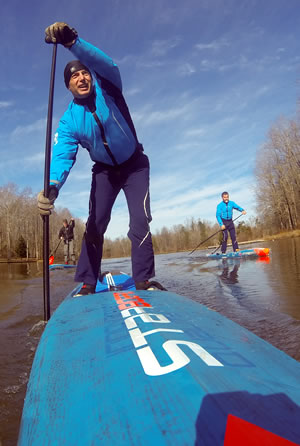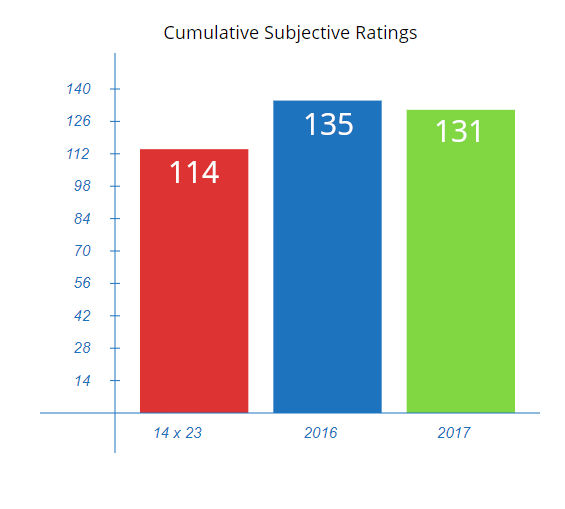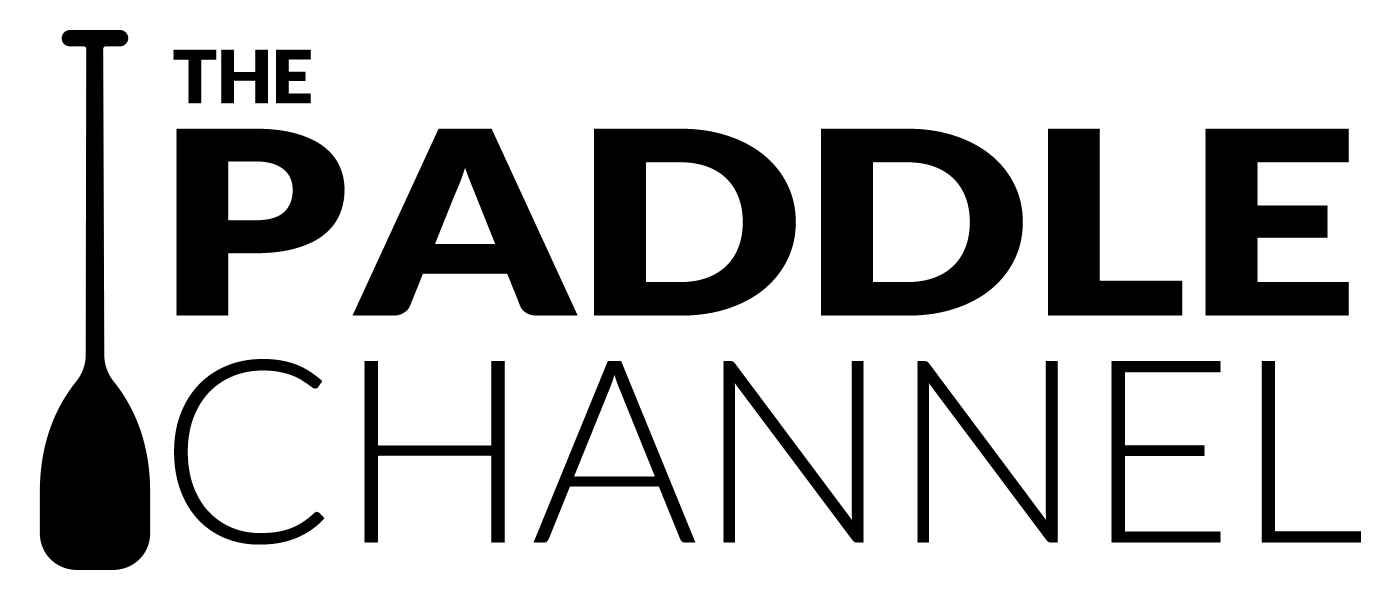Speed Testing 3 Top Race Paddleboards: The 2016 14′ x 25″ All Star, the 2017 14′ x 24.5″ All Star, and a custom 2016 14′ x 23″ All Star

I was actually giddy on test day — I’ve been wanting to do a comparison between the 2016 All Star and the 2017 All Star since the day the 2017 models hit the market. If you’ve read my comments about the 2016 All Star in our other race SUP tests, you know that I’m slightly (okay, completely) infatuated with the 2016.
I fully expected Starboard to sit on the 2016 design for a few years with no change — I just didn’t see how they could improve on it. Then Starboard announced the 2017 model, with some significant changes, supposedly better, faster, more bionic — I didn’t know whether to be sad or elated. I mean, if it ain’t broke, don’t fix it, right? Could the 2017 All Star actually BE better than the 2016 model?
When you throw in the third board of the day, a 14′ x 23″ All Star, we truly had an All Star lineup to test (see what I did there?).
The Usual Disclaimer: In my opinion, there is no single “fastest” stand up paddleboard. I do believe there is probably a fastest board for you, but what that board may be could vary depending on wind, current, chop, fatigue, your form and technique, your skill, your paddle, your body weight, and what you had for breakfast. It’s important for you to take the results that follow for what they are — the results of a fun day of riding some great boards.
Meet the Boards

2017 Starboard All Star Carbon SandwichLength: 14’0″ |
2016 Starboard All Star Hybrid CarbonLength: 14′ |
2016 Custom 14′ x 23″ All Star Carbon SandwichLength: 14′ |
The Protocol

Testing took place on a flatwater course with light, shifting winds. The three test paddlers recorded their own times traversing a .2-mile straight course, leaving approximately 15-20 seconds apart so each paddler was wake-free. Boat traffic was nil, probably because we were the only folks in the neighborhood willing to play on the water in near-freezing temperatures**.
Paddlers were instructed to paddle at race pace during each trial, striving to produce consistent effort throughout all six trials. All paddlers took two runs on each paddleboard, switching boards after each run. Each paddler’s slow trial on each board was discarded, so the results only show the best run on each board.
Each All Star was tested with its stock fin, except the 23″ board, which doesn’t have a stock fin. The 23″ sported a Futures California Downwind fin.
After each run, the testers paddled nice and easy back to the dock at mid-course, lied about their times, I mean, recorded their times, exchanged boards and moseyed to the starting dock, allowing plenty of time for recovery between trials.
All three paddlers are fairly experienced, and could be characterized as middle-of-the-pack to front-of-the-middle-of-the-pack paddlers, and should be representative of the general SUP racing population. Rider weights were 176 lbs, 178 lbs, and 185 lbs.
The Results — so enough already, which All Star is the fastest?
| 2016 23″ | 2016 25″ | 2017 24.5″ | |
| Paddler 1 (176 lbs) | 2:03 | 2:08 | 2:05 |
| Paddler 2 (178 lbs | 1:58 | 2:07 | 2:03 |
| Paddler 3 (185 lbs) | 2:24 | 2:22 | 2:21 |
Paddlers 1 and 2 were fastest on the 23″ board, which isn’t unexpected. In flatwater conditions, if you’re comfortable on a narrow board, the 23″ is a rocketship. Paddler 3, who is both taller and heavier, was not as comfortable with the lower volume of the 23″ and posted his fastest time on the 2017 All Star.
Comparing 2016 and 2017
The real point of this test was to see how the 2016 and 2017 models stacked up against each other. If we throw out the 23″ board, the results are consistent — all three testers were faster on the 2017 All Star.
At Race Distance…
If we extrapolate these test results out to a 10k race distance, you can see the potential difference between the two boards in flat conditions:
- Paddler 1 would finish 1:29 faster on the 2017.
- Paddler 2 would be 1:59 faster on the 2017.
- Paddler 3 would be :08 faster on the 2017.
Rider Impressions
Before you rush out and put your 2016 Starboard All Star on craigslist, remember that our 2016 All Star is the hybrid model, not the carbon sandwich model. Is it possible the carbon sandwich model would perform a little better (‘sounds like a good test to conduct in the future)?
You also might want to consider our riders’ impressions of each board:
Stability Impressions

In terms of stability, the 2016 is clearly more stable than the 2017 with their respective stock fins. I’ve read several reviews indicating the 2017 is “as stable if not more stable” than the 2016 — none of us found this to be the case.
I’ve spent quite a bit a time on both boards, and I’ve found the 2016 to be rock-steady in all conditions — incredibly steady for a 25″ board. Side chop, intense headwinds, ripping tailwinds — it doesn’t care. It just rides through it. To me, the 2016 is easier to surf and is a bit more forgiving than the 2017 in rough conditions (with their respective stock fins). However, once you learn to trust the secondary stability of the 2017, you’re going to have a lot of fun and you’re going to go very fast.
I’ve had both boards out in the bumps coming through Masonboro Inlet in Wrightsville Beach, and both are a dream on the bumps. The high volume nose of these boards is very patient with you — if your weight is a little too far forward on the bump, the board patiently waits for you to shift back. When you do, the nose lifts and the boards absolutely shoots forward. So. Much. Fun.
While all three paddlers felt the 2016 was more stable than the 2017 (and waaay more stable the 23″ board, which very stable for its width, but you know, it’s still 23″ wide), all three felt the 2017 model was superior in balancing speed and stability. It might be slightly less stable, but it’s also a little faster.
Tracking Impression
All three boards track well, but I’m a little partial to the 2016 board/fin combination. When paddling the 2016, I usually switch sides only because I get fatigued and want to give the other side a chance to play. For me, the the 2017 and the Natural Winner fin don’t track as well. Still good, but not the arrow straight lines the 2016 can produce. Our test paddlers didn’t notice much difference between the two models, so maybe it’s just me.
Rider Ratings
Borrowing a scoring technique from Big Winds’ review method (see 2016 All Star vs. 2015 All Star), I asked each paddler to rate each board in terms of stability, tracking, glide, speed, and overall impression. Remember, these are purely subjective ratings, but you might find them useful.
2016 14′ x 23″
| Stability | Tracking | Glide | Speed | Overall | Total | |
| Paddler 1 | 6 | 9 | 10 | 10 | 7 | 46 |
| Paddler 2 | 10 | 8 | 7 | 8 | 9 | 42 |
| Paddler 3 | 6 | 7 | 6 | 8 | 7 | 33 |
2016 14′ x 25″
| Stability | Tracking | Glide | Speed | Overall | Total | |
| Paddler 1 | 10 | 10 | 8 | 8 | 10 | 46 |
| Paddler 2 | 10 | 8 | 7 | 8 | 9 | 42 |
| Paddler 3 | 10 | 10 | 8 | 8 | 10 | 47 |
2017 14′ x 24.5″
| Stability | Tracking | Glide | Speed | Overall | Total | Notes | |
| Paddler 1 | 7 | 8 | 9 | 10 | 9.5 | 43.5 | “I like this board more than the score shows.“ |
| Paddler 2 | 8 | 7 | 8 | 9 | 8.5 | 40.5 | |
| Paddler 3 | 9 | 9 | 10 | 9 | 9 | 47 | ”Good glide on this board. Not as stable as the 2016, but still very good, and it seems to have a little more speed.“ |
Cumulative Subjective Ratings

Conclusion
Starboard hit a home run with the 2016 and 2017 All Stars. I personally think the 2016 may be THE most versatile board on the market for your average Joe Paddler, handling all conditions extremely well.
For those paddlers with superior skills who want to eke out a little more speed, the 2017 is your ticket. Don’t get me wrong — the 24.5″ 2017 is incredibly stable for a board of its width.
During testing, each time a test paddler stepped on the 2017, you would hear, “Man, this is a NICE board…”
I’m looking forward to testing a different fin under the 2017 model. Starboard describes the Natural Winner fin, which comes standard on the 2017 All Star, as aiding in “beach starts, maneuverability in surf and easier buoy turning.”
It’s no surprise, then, that this fin offers a little less stability than the 2016 stock fin. But as I said, the 2017 is still a very stable platform, and I do love it. I love it a lot.
Either way, 2016 or 2017 Starboard All Star, you can’t go wrong. Well, done, Starboard, well done.
Written by Rod Clayton
**As always, safety is paramount when paddling. All three paddlers wores PFDs, leashes, and drysuits at all times during testing.







